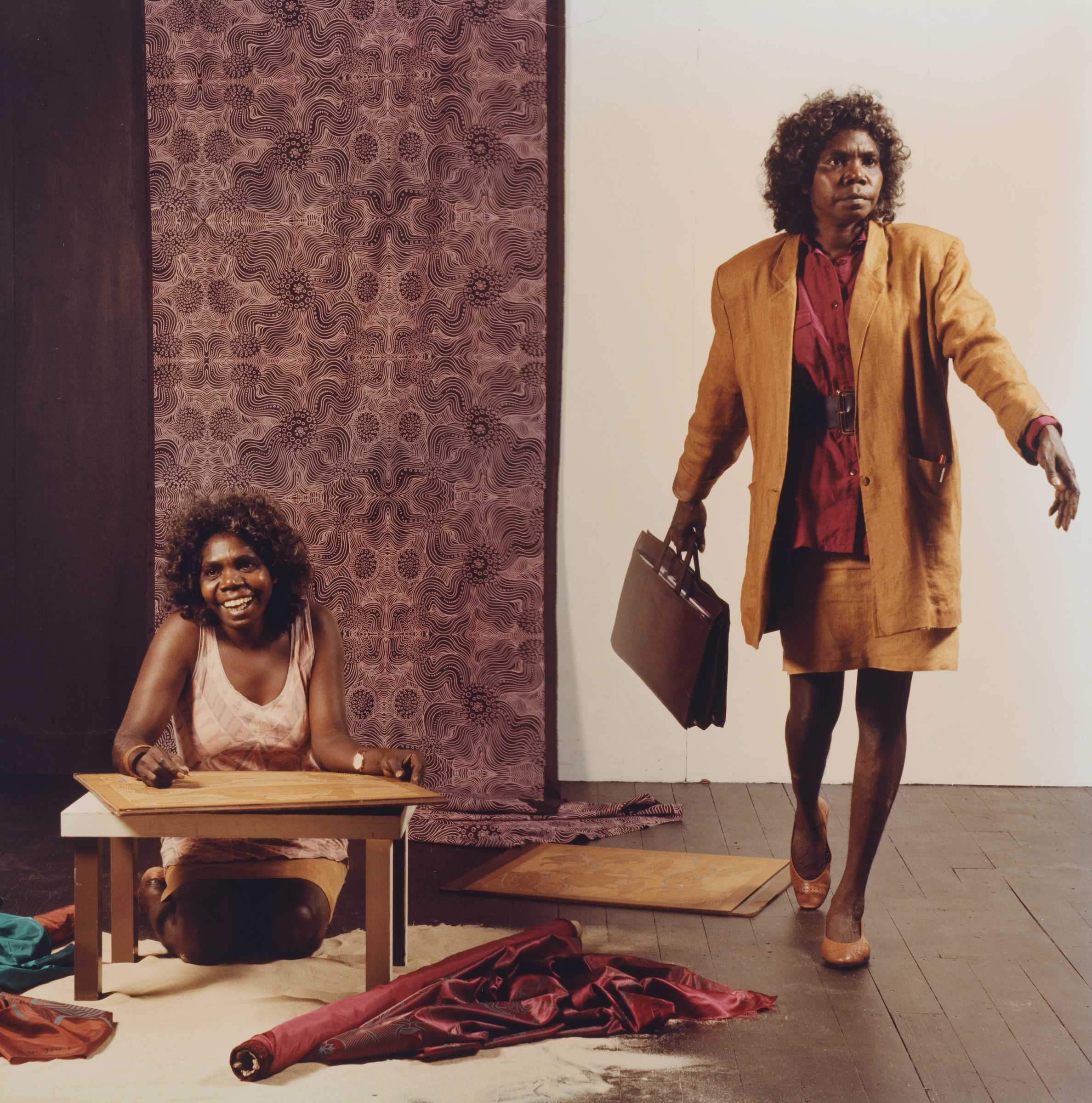The pioneering Arnhemland woman artist, cultural activist and environmental adviser has died aged 66 in Yirrkala according to the Buku Larrnggay Mulka Art Centre, which she once managed.
Banduk Mamburra Marika was a member of the renowned Marika family of artists and activists, and was taught traditional bark painting by her father, Mawalan (1908–1967), the artist and statesman who in 1963 helped initiate Australia’s first Aboriginal land rights case. He was also radical in encouraging her and her sisters to paint the ancestral creation stories of their clan, an activity formerly reserved only for Yolngu men.
Moving to Sydney in 1980, she was befriended by Jennifer Isaacs at the Australia Council, who encouraged Banduk to study print-making at the Willoughby School of Art, later at the East Sydney Technical College (which became the National Art School). She also worked as a translator and in film and television and later completed artist residencies in Canberra and Flinders University in South Australia, which awarded her an honorary doctorate in 2018.
Returning to Yirrkala in 1988, Marika managed the Buku-Larrnggay Arts Centre while continuing work as an artist and educator. She also took on responsibility for her father’s Country, getting involved in education, conservation and advocacy work as a member of bodies such as the Northern Land Council and Landcare. In 1992, she established the Mawalan1 Gamarrwa Nuwul Association for the management of Rirratjingu lands.
As a traditional landowner at Yirrkala, Banduk was determined to ensure her Yolngu homeland in Yalangbara (Port Bradshaw) – one of the most significant sacred sites in northeast Arnhemland region – was recognised and protected. She lobbied intensely for Yalangbara’s heritage listing, which was won in 2003, and co-published an important book in 2009 on the region’s history and ancestral traditions: Yalangbara: Art of the Djang’kawu, with an accompanying exhibition curated by Margie West at the NT Art Gallery.
In the forward to that catalogue, Dr Marika states: “Yalangbara is the most important site in the north-east Arnhemland for Dhuwa moiety people. It’s the site where the first ancestors, the two Djang’kawu Sisters and their brother landed, and people as far away as western Arnhemland and south down to Numbulwar refer to Yalangbara as the place of the First people, the First People who were born or created there – these people were Rirratjingu, my own family group. The Djang’kawu then moved on to different Countries, giving birth to different people, creating and naming places and giving people their specific languages.”
“This story is important,” Banduk has explained elsewhere, “and is why our fathers painted all these artworks, to show how these paintings relate to particular sites and what they mean. At the time they did not have a translator to tell their stories properly and so we want to tell their stories properly now.”
The book, Yalangbara: Art of the Djang’kawu, was joint winner of the 2009 Chief Minister’s Northern Territory Book History Awards. In 2020, Banduk was NT State Recipient of the title, Senior Australian of the Year.
After many years specialising in print-making, the battle for sea rights at Blue Mud Bay encouraged Banduk to return to barks, painting the definitive ‘Rirratjingu Dhawu‘ work for the ‘Saltwater Collection‘, which together, arguably won the case in the courts for the Yolngu.
In 1994, Banduk was involved in one of the most successful copyright cases in Australia when the Federal Court ruled against a company that had produced counterfeit carpets based on her print, ‘Djanda and the Sacred Waterhole‘. She went on to become a board member of the Indigenous Art Code and was part of a team lobbying for government action against the sale of inauthentic artefacts that have no genuine connection to First Nations culture.
Dr Marika received the Australia Council’s Red Ochre Award in 2002, and in 2005 won the Best Bark Prize at the Telstra National Aboriginal & Torres Strait Islander Art Awards. She also helped to establish the Wandjuk Marika Memorial 3D Award at the Telstras. Marika has served on boards for organisations including the Aboriginal Visual Arts Committee of the Australia Council, the National Gallery of Australia – where she was the first Indigenous board member – and Bangarra Dance Theatre.
Dr Marika was made an Officer of the Order of Australia in the 2019 Australia Day Honours for “distinguished service to the visual arts, particularly to Indigenous printmaking and bark painting, and through cultural advisory roles”.




